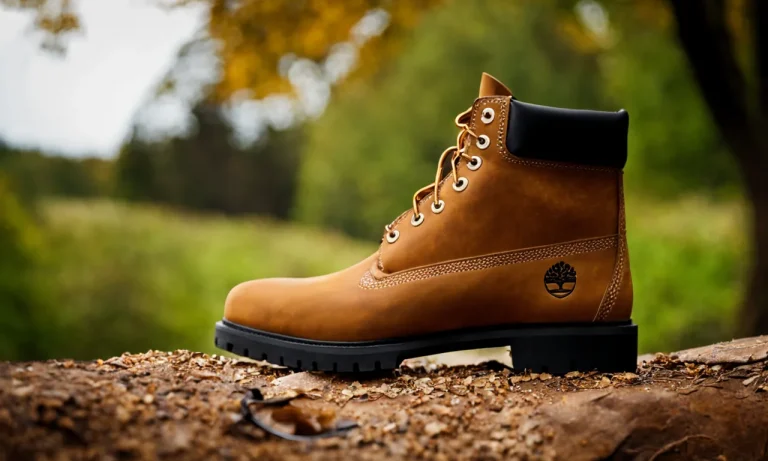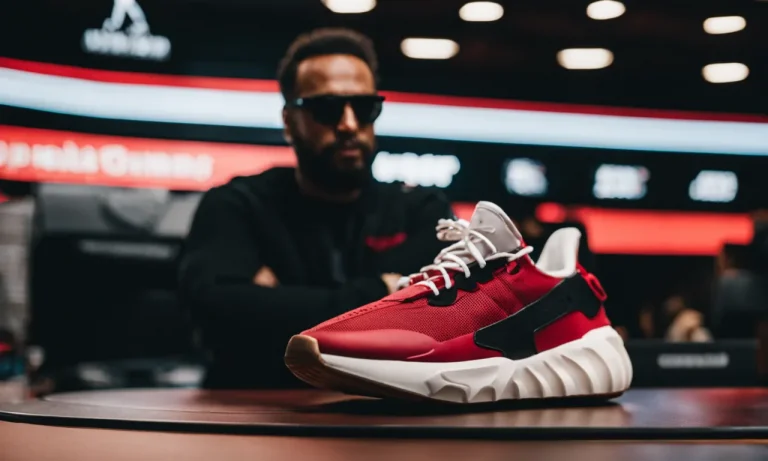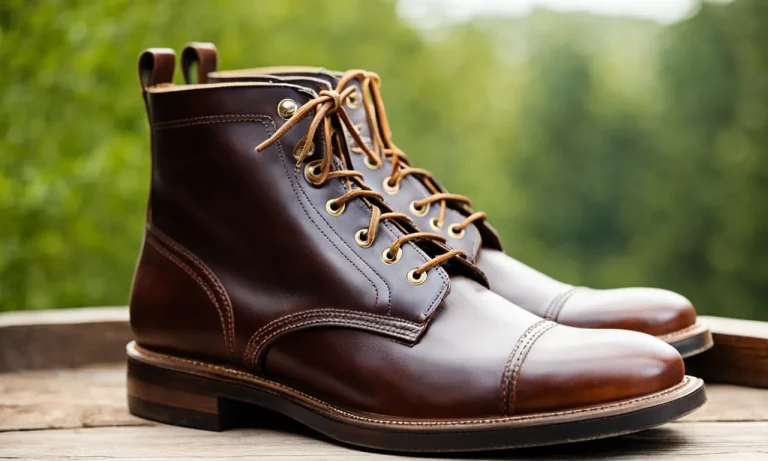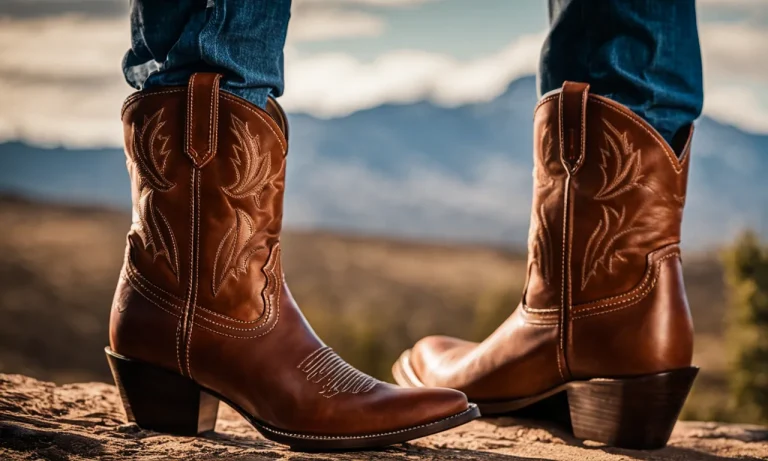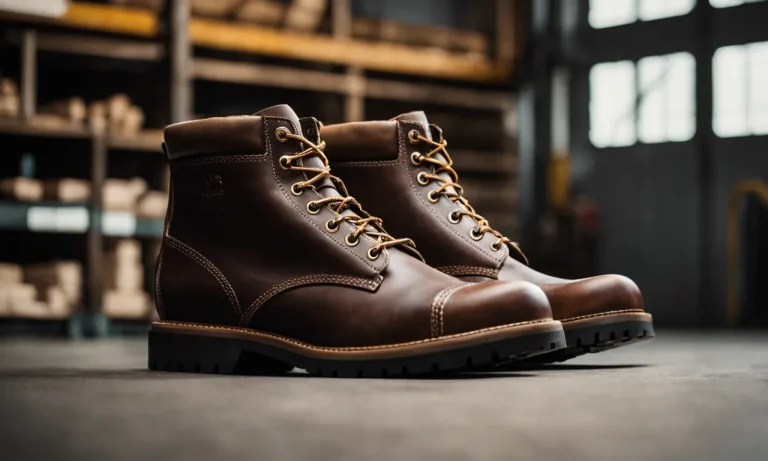Shoelaces are an integral part of many shoe styles, allowing you to adjust the snugness and fit. But have you ever wondered what those little holes on the sides of your shoes are called where you thread the laces through?
These are known as eyelets, and they play an important functional role in securing your laces.
If you’re short on time, here’s a quick answer to your question: An eyelet is a small hole or ring on a shoe used for threading shoelaces through in order to fasten the shoe securely to your foot.
In this comprehensive guide, we’ll explore everything you need to know about shoe eyelets. We’ll cover their purpose, different types of eyelets, how they’re made, and how the number and placement of eyelets affects shoe comfort and performance.
The Purpose and Function of Shoe Eyelets
When it comes to shoes, eyelets play a crucial role in both the functionality and aesthetics of the footwear. Eyelets are small metal or plastic rings that are typically found along the edge of the shoe’s opening, where the laces pass through.
They serve two main purposes: securing the laces and reinforcing the shoe upper.
Securing the laces
The primary function of shoe eyelets is to secure the laces, keeping the shoe firmly in place on the wearer’s foot. The laces are threaded through the eyelets, creating a tightening mechanism that allows the shoe to be adjusted to the desired level of tightness.
This ensures a snug and comfortable fit, preventing the shoe from slipping off during physical activity or daily wear.
Eyelets come in various shapes and sizes, depending on the type of shoe and the desired level of support. For example, hiking boots often have larger, more durable eyelets to withstand the strain of rough terrains, while casual sneakers may have smaller, decorative eyelets for a more fashionable look.
Reinforcing the shoe upper
In addition to securing the laces, eyelets also serve to reinforce the shoe upper. The eyelets are typically placed strategically along the shoe’s opening, where the material may be more prone to stretching or tearing.
By incorporating eyelets into these areas, the shoe’s upper is given added strength and durability.
This reinforcement is particularly important in athletic shoes or boots that are designed for intense physical activities. The constant movement and stress placed on the shoe can lead to wear and tear over time.
Eyelets help distribute the tension more evenly across the shoe, reducing the risk of damage and prolonging the shoe’s lifespan.
Types of Shoe Eyelet Designs
Metal eyelets
Metal eyelets are a popular choice in shoe design due to their durability and sleek appearance. These eyelets are typically made from materials such as brass, stainless steel, or aluminum. They are often used in athletic shoes and boots, where strength and longevity are important.
Metal eyelets not only provide a secure way to lace up your shoes but also add a stylish touch to the overall look. You can find them in various shapes and sizes, including round, oval, or even custom designs.
Punched eyelets
Punched eyelets, also known as punched holes, are a classic and traditional type of eyelet design. They are created by punching or cutting a hole directly into the shoe material. Punched eyelets are commonly found in dress shoes and are often used for a more formal or elegant look.
These eyelets can be reinforced with metal or plastic rings to prevent tearing or fraying of the material. Punched eyelets offer a timeless aesthetic and are a popular choice for those who appreciate classic footwear styles.
Worked/stitched eyelets
Worked or stitched eyelets are created by sewing or stitching the shoe material to create small holes for lacing. This type of eyelet design is commonly seen in handcrafted or artisanal shoes. Worked eyelets offer a unique and intricate look, adding a touch of craftsmanship to the shoe’s design.
They are often found in high-end leather shoes and can be embellished with decorative stitching to further enhance their visual appeal. These eyelets provide a secure and snug fit, making them a favorite among shoe enthusiasts.
Loops
Loops, also known as grommets or fabric eyelets, are a type of eyelet design that is made by folding or looping the shoe material to create a small opening for lacing. This design is commonly found in canvas shoes, sneakers, or casual footwear.
Loops are lightweight, flexible, and easy to use, making them a popular choice for everyday shoes. They can be made from various materials such as fabric, plastic, or metal, depending on the shoe’s style and purpose.
Loops offer a casual and relaxed look, perfect for those who value comfort and versatility in their footwear.
Eyelet Manufacturing and Materials
Eyelets are an essential component of shoes that not only provide functionality but also add a touch of style. In this section, we will explore the different methods of manufacturing eyelets and the materials commonly used in their production.
Die-punching
Die-punching is a popular method used to manufacture eyelets. In this process, a die is used to create precise holes in the shoe material, which are then reinforced with metal or plastic eyelets. Die-punching allows for consistent and accurate placement of the eyelets, ensuring a secure fit and long-lasting durability.
Laser cutting
Laser cutting has revolutionized the manufacturing industry, and it has also found its way into eyelet production. With laser cutting, a high-powered laser beam is used to create precise and intricate patterns in the shoe material.
This method offers flexibility in design and allows for the creation of eyelets in various shapes and sizes.
Hand stitching
While machine manufacturing methods have become prevalent, hand stitching still plays a significant role in eyelet production. Skilled artisans meticulously stitch eyelets onto the shoe material, ensuring a seamless and visually appealing finish.
Hand-stitched eyelets are often associated with high-end footwear, where attention to detail is paramount.
Common materials
Eyelets can be made from a variety of materials, depending on the desired look and functionality. Some commonly used materials include:
- Metal: Metal eyelets, such as brass or stainless steel, are known for their durability and strength. They are often used in heavy-duty shoes and boots.
- Plastic: Plastic eyelets are lightweight and resistant to corrosion, making them suitable for athletic and casual footwear.
- Rubber: Rubber eyelets provide flexibility and are commonly used in water-resistant shoes or outdoor gear.
- Fabric: Fabric eyelets are made from the same material as the shoe upper, creating a seamless and cohesive design.
It’s important to note that the choice of materials for eyelets can impact the overall look, comfort, and durability of the shoe. Manufacturers carefully consider these factors to ensure they meet the specific requirements of the footwear.
For further information on eyelet manufacturing and materials, you can visit reputable websites such as shoemakingcourse.com or thesneakerfactory.com.
Number and Placement of Eyelets
When it comes to the number and placement of eyelets on a shoe, there are a few important factors to consider. The number of eyelets can greatly affect the adjustability and fit of the shoe, while the placement of the eyelets can have an impact on the overall design and functionality.
More eyelets = more adjustability
Generally, the more eyelets a shoe has, the more adjustability it offers. Shoes with a higher number of eyelets allow for a greater degree of customization when it comes to tightening or loosening the laces.
This can be particularly beneficial for individuals with narrow or wide feet, as well as those who require additional support or stability.
According to a study conducted by the American Podiatric Medical Association, shoes with more eyelets tend to provide a better fit and reduce the risk of foot discomfort or injuries. So, if you’re someone who values a customizable fit, opting for shoes with more eyelets might be a great choice for you.
Common eyelet patterns
There are several common eyelet patterns that you may come across when shopping for shoes. One of the most popular patterns is the standard symmetrical design, where the eyelets are evenly spaced on both sides of the shoe. This pattern provides a balanced and aesthetically pleasing look.
Another common pattern is the diagonal lacing system, where the eyelets are positioned diagonally across the shoe. This design is often used in athletic shoes as it helps to provide a secure fit and prevent the foot from sliding forward during physical activity.
Asymmetrical designs
While symmetrical eyelet patterns are more common, there are also shoes with asymmetrical designs. These designs can be found in various styles and serve different purposes. For example, some shoes may have additional eyelets on one side to provide extra support or stability for individuals with specific foot conditions or biomechanical issues.
It’s important to note that the placement of the eyelets in these asymmetrical designs is carefully considered by shoe manufacturers to ensure optimal support and comfort. So, if you have specific foot concerns, it may be worth exploring shoes with asymmetrical eyelet patterns.
Consider foot shape and biomechanics
When choosing shoes based on the number and placement of eyelets, it’s also important to consider your foot shape and biomechanics. Everyone’s feet are unique, and certain eyelet patterns may work better for some individuals than others.
If you have high arches or require additional support, shoes with more eyelets and a secure lacing system can help provide the stability you need. On the other hand, if you have wider feet, opting for shoes with fewer eyelets or wider spacing between eyelets may be more comfortable for you.
Ultimately, the number and placement of eyelets on a shoe play a significant role in its overall fit and functionality. By considering factors such as adjustability, common patterns, asymmetrical designs, and your own foot shape and biomechanics, you can make an informed decision when choosing the right pair of shoes for your needs.
When to Replace Shoe Eyelets
Eyelets on shoes are not just decorative; they serve a functional purpose by securing the laces and allowing for proper adjustment. Over time, however, eyelets can wear out or become damaged, leading to potential issues with the overall functionality and appearance of the shoe.
Knowing when to replace shoe eyelets is important to ensure the longevity and performance of your footwear.
Signs of wear
One of the most common signs that shoe eyelets need to be replaced is visible wear and tear. If you notice fraying or thinning of the eyelet holes, it may be time to consider getting them replaced. Additionally, if the eyelets are becoming loose or no longer hold the laces securely, this could be a clear indication that they are worn out and need to be replaced.
It’s always better to be proactive and replace them before they completely break.
Rusting metal grommets
Metal grommets are commonly used as eyelets on shoes, and they are susceptible to rust over time, especially if exposed to moisture. Rusty eyelets not only affect the overall appearance of the shoe, but they can also weaken the integrity of the eyelet itself.
If you notice any signs of rust on your shoe’s eyelets, it’s best to replace them to prevent further damage and ensure the longevity of your footwear.
Snapped/torn holes
In some cases, the eyelet holes on your shoes may become snapped or torn, making it impossible to properly secure the laces. This can happen due to excessive force, accidents, or even normal wear and tear over time.
If you find that the eyelet holes have snapped or torn, it’s crucial to replace them to avoid any discomfort or inconvenience while wearing your shoes.
It’s important to note that replacing shoe eyelets can be a relatively straightforward process. You can either do it yourself using an eyelet repair kit or take your shoes to a professional cobbler. Either way, replacing worn-out or damaged eyelets will help maintain the functionality and aesthetics of your favorite pair of shoes.
For more information on shoe care and maintenance, you can visit www.shoecareadvice.com or www.shoerepairtips.com.
Conclusion
Shoe eyelets may seem like a mundane detail, but they serve important functions in lace security, reinforcement, and adjustability. Multiple eyelet types, materials, placements, and numbers exist to suit different shoe styles and uses.
When eyelets become damaged, replacing them quickly preserves shoe function and lifespan.
The next time you tie your shoelaces, take a second to appreciate the small but mighty eyelets that make it possible! Understanding eyelet design gives insight into shoemaking craft and engineering. And if an eyelet ever pops or tears on your favorite kicks, you now have the knowledge to get it fixed and keep on lacing happily.

